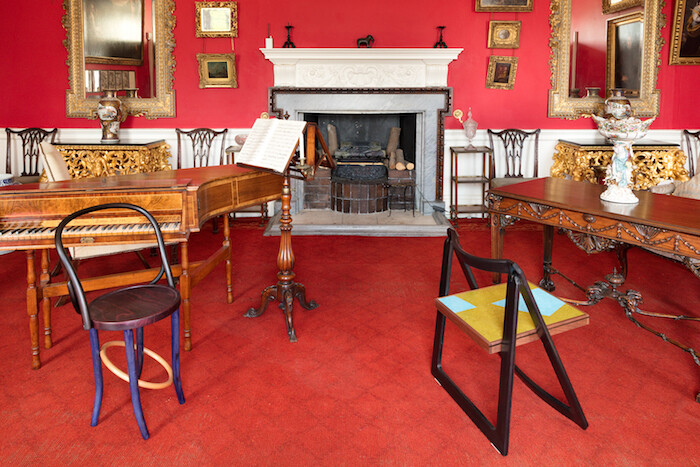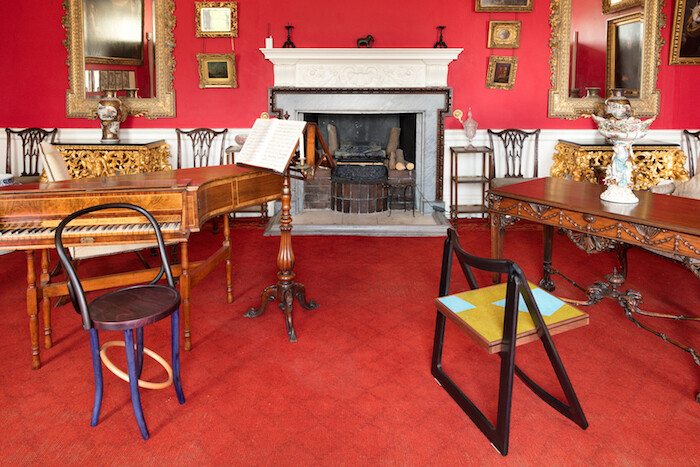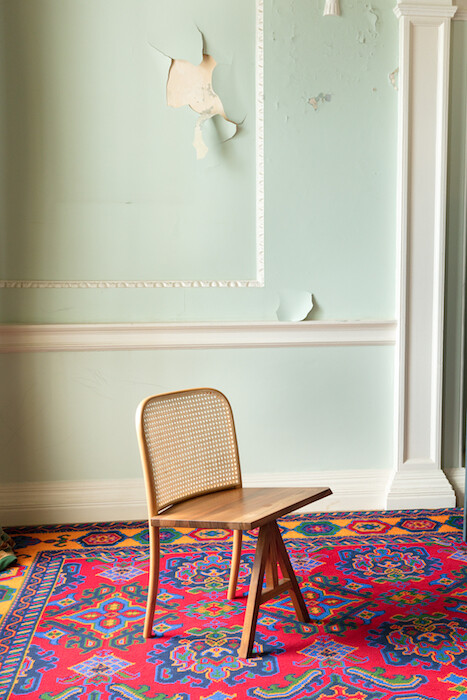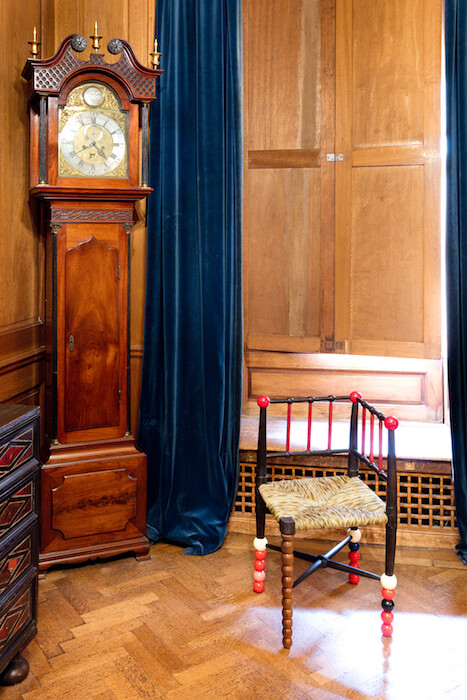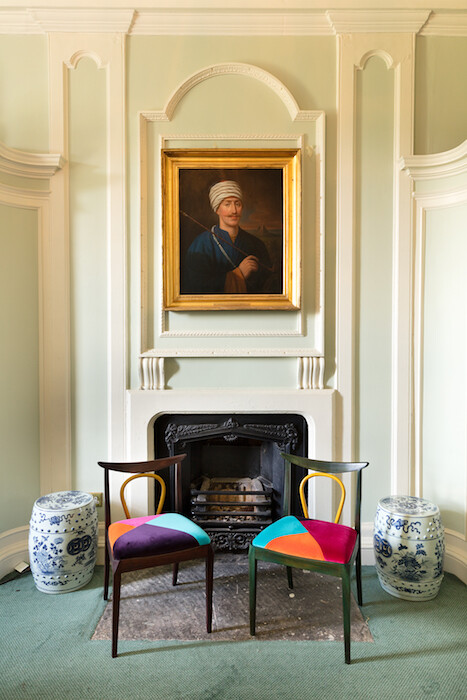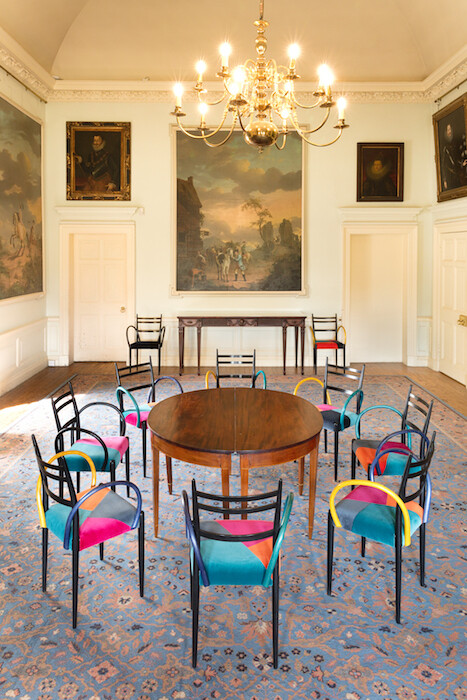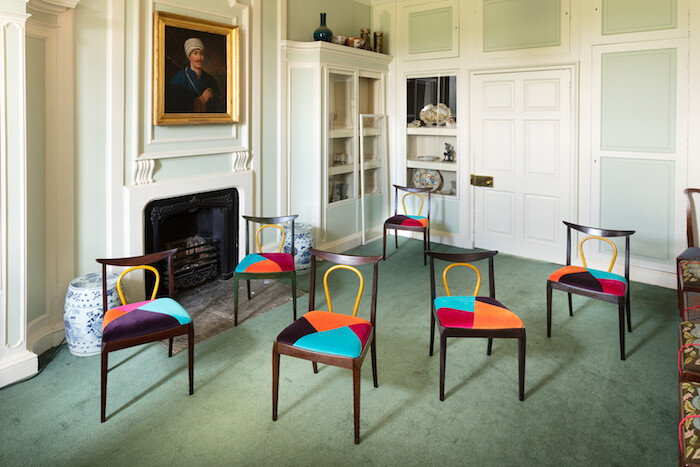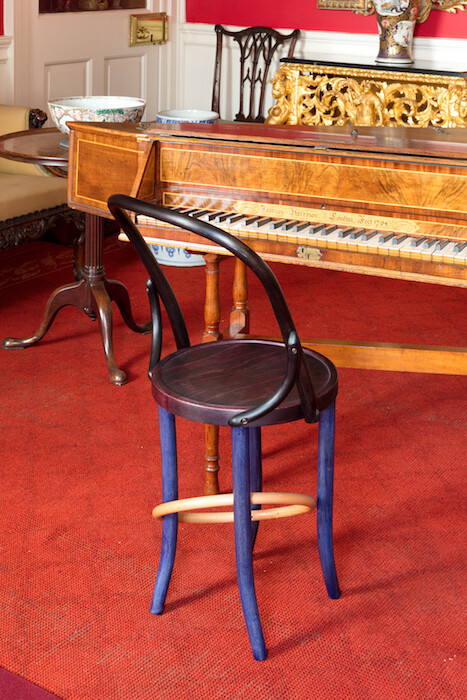The marriage of Italian designer Martino Gamper and Pollok House in Glasgow, set up by The Modern Institute, is a perfect match. Originally the ancestral home of the Stirling-Maxwell baronetcy, the house was built in 1752 and is run now by the National Trust as a public museum. Much of the furniture in the house today is not native to the site, having been imported by the Trust at various points in the history of the building.
All of this provides the ideal context for Martino Gamper’s intervention, which replaces several chairs in the house’s collection with his own unique designs (as well as providing chairs for invigilators and visitors). The unity of the house and its furniture has been disrupted over the years, and so the mongrelization of the interiors is echoed in the hybridity of chairs such as Fortezza (all works 2017) and Bobbin Ball. These draw on modernist design, but with elements collaged together from various periods and styles. Moreover, objects such as croquet mallets are absorbed into the furniture with a knowing wink towards the pastimes of mansion owners.
The surprise in this context lies in the peculiar mixture of aesthetic shock and familiarity. On one level Gamper’s chairs—some rescued from dereliction, others rectified and sliced open, all grafted together with varying degrees of humor, design archeology, and diabolical experimentation—chafe against the formal and domestic interior of Pollok House. At the same time though, confusingly, they settle in quite well. This odd impact is rooted in the history of the chair itself. A luxury item for most of history, chairs only begin to proliferate in the eighteenth century (around the same time Pollok House came into being). It is also an item of furniture that morphs continually in form but never varies in function. The chair does not evolve in the same way as many objects: instead, its shape mutates to reflect fashion, status, and manufacturing capabilities. It’s an object, then, capable of continual change but always familiar.
Gamper’s interest in chairs is also grounded in their intimate relationship to the human body. It is the trace of the body in the chair that interests him, the ways in which the chair can subtly mold the body and the limits the human body places on the design of any chair. Few objects in a household speak so clearly of the human presence and chairs, like clothes, tell us much about their owners’ approach to life (the New England Shakers’ chairs must be one of the great examples of object as embodiment of belief). The history of the chair is also closely aligned to the emergence of the individual human subject in the eighteenth century. Previously benches had been the main form of seating, emphasizing communality and shared space. The rise of the capitalist subject in Europe was marked by the creation of private space, the acknowledgement of individual ego and the expression of the unique self through consumer objects: the chair became a quiet symbol of this social transition.
Dropping Gamper’s chairs into Pollok House disturbs this cozy history. The house is typical of its period and status in achieving the appearance of social and aesthetic unity—rooms and artifacts pulling together all the strands of industry, art, and craft that, combined, express the acme of Western civilization and power. That way of life is stated modestly in these country mansions (part of its persuasive strength) and it manifests the European society that foundered during the First World War. The colors and bold geometrical designs in works like Campaign Chair or Curvo Chair 1 recall the disruptive art that emerged after that war. Even more telling are the techniques Gamper employs—collage, cut-ups, found objects, and dissonant juxtapositions all echo the aesthetic ruptures of twentieth-century art. The stable Newtonian gravity of nineteenth-century European interior design is challenged by a wild array of alternative physics that Gamper’s chairs bring into play. His slices through chair legs, and arm rests, open up other dimensions. The absorption of everyday objects and images such as croquet mallets or evening suits into the bone structure of the chairs demonstrates the unreliability of space and time.
The way in which Gamper constructs each chair adds an interesting footnote to this general deconstruction of the capitalist/consumer paradigm. Raiding the remains of great furniture factories and the scrapped leftovers of markets and streets, Gamper dismantles and uniquely reassembles his objects. The detritus of mass manufactured designs is subjected to a craft process that takes the original material beyond its earlier commercial life. This process also undermines the “design star” system that celebrates names such as Marcel Breuer, Charlotte Perriand, Eero Saarinen, or Eileen Gray, submerging them in the seemingly infinite horde of anonymous chair makers. Paradoxically, the mutant particularity of each Gamper hybrid disturbs our sense of ourselves as individuals defined by our consumer tastes. The gentle freakishness of each object devours the notion of the replica.
